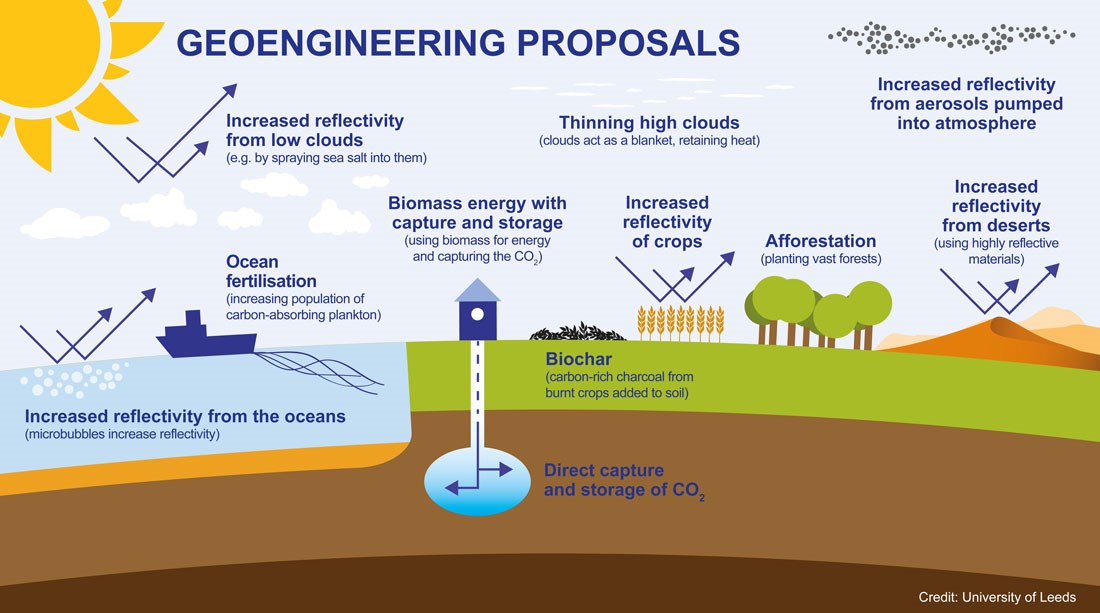Climate Geoengineering 23/04/2019 – Posted in: Daily News
Climate Geoengineering
For: Preliminary & Mains
News Flash
A decade of record-breaking temperatures and three years of consecutive drought, China deploys sulphate particles in the stratosphere to reflect sunlight and reduce temperatures.
Geoengineering
Also known as Climate Engineering, it is the intentional large-scale intervention in the Earth’s climate system to counter climate change. Climate geoengineering technologies can be divided into three broad areas: so-called solar radiation management (reflecting sunlight to space), greenhouse gas removal and sequestration and weather modification.
Geoengineering can refer to a wide range of techniques, including:
- Blasting sulphate particles into the stratosphere or ‘whitening’ clouds to reflect the sun’s rays;
- Dumping iron particles in the oceans to nurture CO2 -absorbing plankton;
- Firing silver iodide into clouds to produce rain or genetically engineering crops so their foliage can better reflect sunlight.
Three proactive strategies could reduce the risks of climate change:
1) Mitigation: reducing emissions;
2) Adaptation: moderating climate impacts by increasing our capacity to cope with them;
3) Geoengineering: deliberately manipulating physical, chemical, or biological aspects of the Earth system.
Geoengineering proposals fall into at least three broad categories: 1) reducing the levels of atmospheric greenhouse gases through large-scale manipulations (e.g., ocean fertilization or afforestation using non-native species); 2) exerting a cooling influence on Earth by reflecting sunlight (e.g., putting reflective particles into the atmosphere, putting mirrors in space, increasing surface reflectivity, or altering the amount or characteristics of clouds); and 3) other large-scale manipulations designed to diminish climate change or its impacts (e.g., constructing vertical pipes in the ocean that would increase downward heat transport).
Risks associated
Geoengineering proposals differ widely in their potential to reduce impacts, create new risks, and redistribute risk among nations. Techniques that remove CO2 directly from the air would confer global benefits but could also create adverse local impacts. Reflecting sunlight would likely reduce Earth’s average temperature but could also change global circulation patterns with potentially serious consequences such as changing storm tracks and precipitation patterns. As with inadvertent human-induced climate change, the consequences of reflecting sunlight would almost certainly not be the same for all nations and peoples, thus raising legal, ethical, diplomatic, and national security concerns.
Way Forward
Geoengineering will not substitute for either aggressive mitigation or proactive adaptation, but it could contribute to a comprehensive risk management strategy to slow climate change and alleviate some of its negative impacts. The potential to help society cope with climate change and the risks of adverse consequences imply a need for adequate research, appropriate regulation, and transparent deliberation.
Source: Business Standard

